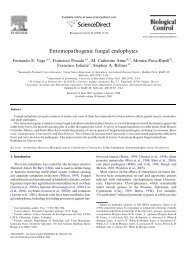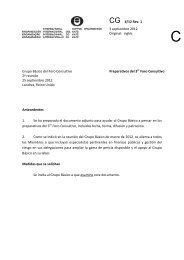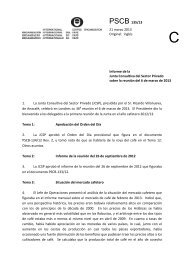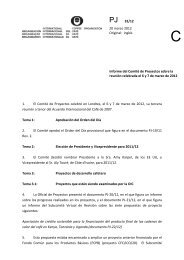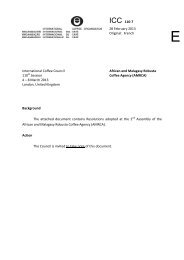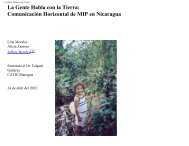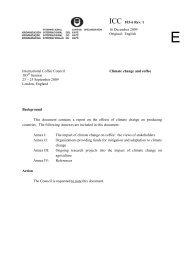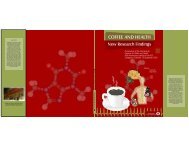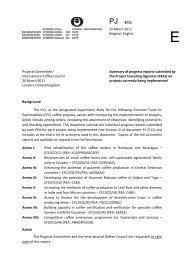Devouring profit - International Coffee Organization
Devouring profit - International Coffee Organization
Devouring profit - International Coffee Organization
Create successful ePaper yourself
Turn your PDF publications into a flip-book with our unique Google optimized e-Paper software.
which is in fact the cheapest component of all. This is not a desirable combination; if<br />
chemical control is regarded as both effective and cheap, it may well encourage farmers<br />
to choose this component over others. Nevertheless, chemical control is considered<br />
the most dangerous for both the environment and human health.<br />
In the meeting we convened in Agua de Piedra, coffee farmers were asked how they<br />
ranked in importance the different IPM components, results appear in Table 17.<br />
Table 17. Ranking of importance of CBB practices. Agua<br />
de Piedra farmers.<br />
As can be deduced from Table 17, the collection of coffee berries is the most important<br />
activity carried out in CBB management by these coffee farmers. This is an encouraging<br />
result because they do not consider the use of insecticides before trying<br />
cultural control. However, we cannot ignore that these very resource-poor farmers<br />
mostly lack spray equipment.<br />
3.2.4 IPM in Guatemala<br />
The recommended CBB management strategy is based on several components (Campos<br />
et al., 1998). Sampling methods should be used to support control decision-making.<br />
CBB sampling should start 90 days after the most important flowering in order to<br />
know both the infestation level and to identify infestation “hot spots” in the coffee<br />
plots. Manual control is the second component. This is based on the collections of<br />
remaining berries after harvesting on both coffee tree and ground. Also, new perforated<br />
fruits from the new harvest should be removed from the plot. Biological control<br />
is implemented by using the parasitoid Cephalonomia stephanoderis. This natural enemy<br />
of CBB should be released from the finishing of the harvest up to the beginning<br />
of the new one (January to September), but so far this recommendation is made only<br />
for large plantations.<br />
Accurate information about IPM uptake at a national level was hard to accurately<br />
assess. We suspect that most large estates still use significant amounts of chemical<br />
insecticides under an IPM framework whereas smallholders use much less. The CFC<br />
project concentrated on one community of smallholders and, although this may not<br />
be representative of Guatemalan smallholders in general, an account of CBB management<br />
there now follows.<br />
CBB Management in the Chocola Community: a survey was carried out here in<br />
1998, when coffee farmers were asked about CBB management. The findings were<br />
37




